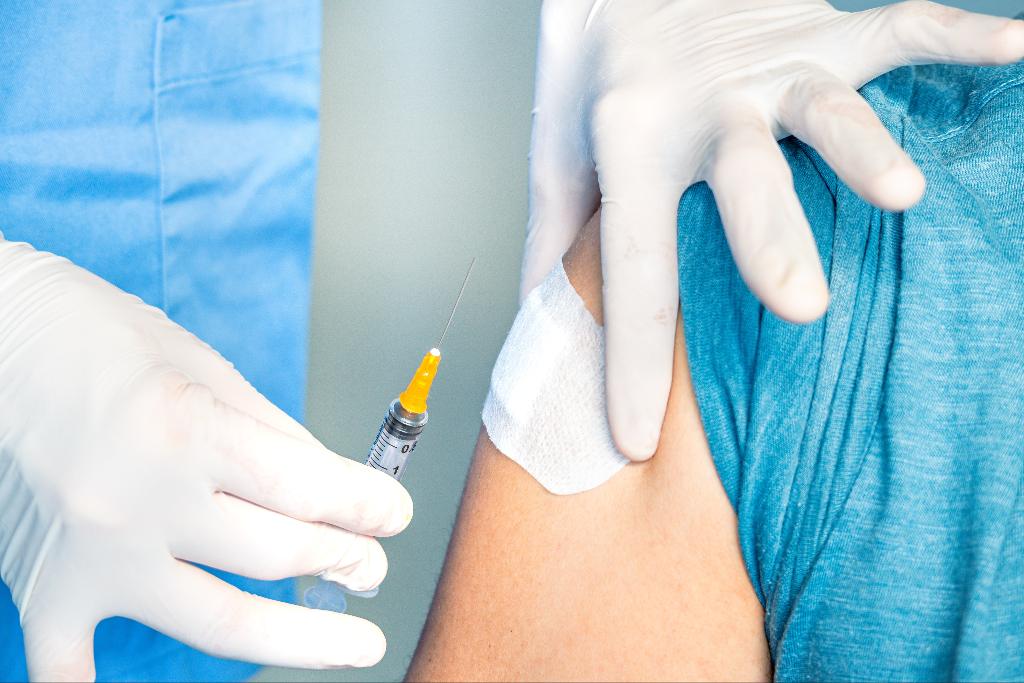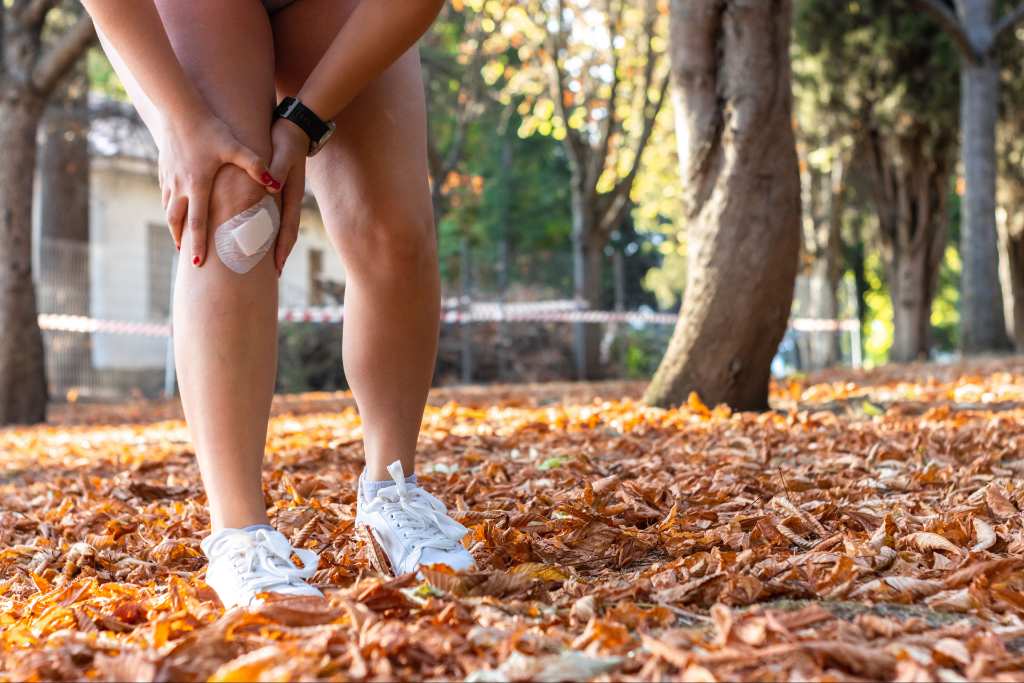Most people are familiar with the central nervous system, i.e. the brain and spinal cord, but there are thousands of nerves in the body that are crucial to performing daily tasks. When these nerves are damaged, the disruption to nerve impulses can have severe consequences and impacts on an individual’s quality of life.
Although we are still learning about the effects of peripheral nerve damage and how to combat it, it is possible for the nerves to regenerate and repair themselves. Learn more about regenerative medicine and natural remedies to try.
What Is Peripheral Nerve Regeneration?
Peripheral nerve regeneration, or PNR, is a complicated process during which damaged peripheral nerves are repaired or replaced. Although this process occurs to some degree as a natural response of the body, it is being studied more extensively so that medical professionals can speed up and improve the effectiveness of the regeneration.
Nerve regeneration is when the axonal sprouts form at damaged nerves and grow into regenerated axons. This important biological process helps restore normal nerve function and sensation in affected areas for recovery from damage due to a wide variety of causes.
Understanding Peripheral Nerves and the CNS
Before we can dive into the various ways in which peripheral nerve regeneration can be promoted and the benefits that can be derived from it, it is important to understand exactly what peripheral nerves are. The body’s nervous system consists of two main parts: the central nervous system (CNS) and the peripheral nervous system (PNS). The peripheral nervous system is all parts of the nervous system outside of the brain and spinal cord. All of the nerves throughout the rest of the body are responsible for sending information to the brain and carrying out commands from the brain.
The PNS can be broken down further into two subsystems: autonomic and somatic. These two systems have three main functions, including managing your senses, movement, and unconscious processes. The somatic nervous system handles functions that require conscious thought, so it is responsible for sensory and movement processes. The autonomic nervous system, on the other hand, manages the bodily processes that the brain runs automatically. For example, maintaining a steady heartbeat and blood pressure, as well as breathing.
If any group of peripheral nerves is damaged, the injury can prevent normal motor and sensory functions. So even though peripheral nerve damage is less common than injuries to the CNS, nerve regeneration is crucial for restoring those functions and improving quality of life.
Do Nerves Regenerate After Damage?
The good news is that peripheral nerves have the remarkable ability to regenerate, a process that sets them apart from the nerves in the central nervous system. This regeneration, however, is influenced by several factors, such as the extent of the damage, the location of the injury, the patient’s age, and the presence of supportive interventions. While the body is naturally equipped to repair damaged peripheral nerves, the rate and extent of regeneration can vary widely.
How Peripheral Nerves Regenerate
The natural process of peripheral nerve regeneration is complex and involves several key players, including Schwann cells, fibroblasts, and macrophages. Among these, Schwann cells play the most critical role in nerve repair. These specialized cells produce myelin, a fatty substance that insulates nerve fibers and accelerates the transmission of nerve impulses. Without sufficient myelin, sensory information cannot efficiently travel to the brain, and motor commands from the brain cannot smoothly reach their target muscles.
Beyond producing myelin, Schwann cells secrete essential growth factors and cytokines, such as nerve growth factor (NGF) and brain-derived neurotrophic factor (BDNF). These molecules create a favorable environment for nerve fibers to regenerate and survive. They also guide regenerating axons toward their target tissues, ensuring that functional connections are re-established.
Peripheral nerve regeneration occurs at an approximate rate of 1 millimeter per day, but this rate depends on factors such as the severity of the injury and the interventions provided. Regeneration can take weeks to months, and even longer for more severe cases. Ensuring adequate blood supply to the affected area, proper nutrition, and avoiding excessive mechanical stress are vital for promoting optimal recovery.
Challenges to Peripheral Nerve Regeneration
Despite the capacity for regeneration, peripheral nerve healing is not always straightforward. Several challenges can limit recovery:
- Chronic Inflammation: Prolonged inflammation can lead to scar tissue formation, which impedes axonal regrowth.
- Lack of Blood Flow: A compromised blood supply can starve the regenerating nerves of oxygen and nutrients, slowing or halting the healing process.
- Axonal Misdirection: In cases of severe damage, regenerating axons may grow in unintended directions, resulting in incomplete recovery of function.
What Are Natural Remedies for Nerve Regeneration?
To repair nerves naturally, several strategies can support peripheral nerve regeneration, including a diet rich in vitamins, fruits, and vegetables, regular exercise, and the use of electrical stimulation.
Vitamins
Vitamin B is an essential nutrient for healthy nerve function. Other vitamins that can help promote nerve regeneration include vitamin B12, vitamin D, and vitamin E. Eating foods that are rich in these vitamins and taking supplements can speed up the natural regeneration process and help patients with peripheral nerve damage recover more quickly.
Fruits and Vegetables
This goes along with providing the body with the necessary nutrients to recover properly. A diet rich in fruits and vegetables can provide these key nutrients to support nerve regeneration. Green and leafy vegetables in particular contain nutrients that are shown to improve nerve function. Fruits that are high in antioxidants — like berries, peaches, cherries, and oranges — can decrease inflammation and reduce nerve damage.
Electrical Stimulation
Electrical stimulation can help by stimulating the growth of new blood vessels and nerve fibers. Regular use of electrical stimulation can accelerate nerve regeneration by increasing the outgrowth of axons, which in turn leads to earlier muscle functional recovery than letting the nerves repair on their own.
The use of electrical stimulation essentially takes the body’s natural response and boosts it so that patients can see results quicker and experience improved function. However, it is important to note that electrical stimulation offers more effective and efficient nerve regeneration for motor nerves than it does for sensory nerves.
Daily Exercise
Regular exercise can help improve circulation and promote the growth of new blood vessels, which is crucial to nerve regeneration. Like electrical stimulation, daily exercise promotes axon growth and shortens recovery time. Combining both exercise and electrical stimulation can have a greater effect, especially during the early stages of recovery.
What Are the Benefits of Peripheral Nerve Regeneration?
Although efforts to promote nerve regeneration are still being developed, the process has significant benefits for those who have suffered nerve damage for a variety of reasons. Even without other clinical therapies available, the above remedies can offer visible improvement in nerve regeneration, as well as improved daily performance, general mobility, and agility. The top three benefits of regenerative medicine are restored function, reduced pain, and improved quality of life.
Restored Function
Peripheral nerve regeneration can help to restore normal function and sensation to affected areas of the body. When the myelin sheath is repaired, the nerves can properly send and receive signals from the brain. This restored function in the muscles affected improves overall mobility and capability.
Reduced Pain
One of the effects of nerve damage is chronic pain. Fortunately, regenerative medicine helps to reduce this pain and discomfort by stimulating the production of BDNF (brain-derived neurotrophic factor). BDNF is often produced after injuries and helps to reduce neuropathic pain, as well as stimulates regeneration.
Improved Quality of Life
Finally, the reduction of pain and restoration of function helps to improve the quality of life in individuals with nerve damage because it allows them to perform essential daily tasks more easily and effectively. Peripheral nerve regeneration makes proper rehabilitation popular and improves the recovery of motor and sensory nerves.
How to Encourage Nerve Regeneration
Encouraging nerve regeneration involves creating an environment that supports the natural repair process while using advanced therapies to optimize recovery. Incorporating practices like a nutrient-rich diet, regular physical activity, and targeted therapies ensures the body has the tools it needs to heal effectively. However, innovative treatments like SoftWave therapy can take nerve regeneration to the next level.
How SoftWave Can Help
SoftWave therapy, one of the best shockwave therapies on the market, is a non-invasive option that accelerates healing by stimulating blood flow and promoting axonal growth. The increased circulation brings oxygen and essential nutrients to the affected area, enabling the nerves to repair themselves more efficiently. Additionally, SoftWave’s acoustic waves help activate cellular mechanisms that encourage nerve regeneration, offering faster and more comprehensive nerve recovery than natural methods alone.
Combining these approaches allows individuals to encourage nerve repair naturally but also achieve more noticeable improvements in function, pain reduction, and overall quality of life. SoftWave technology stands out as a solution for patients seeking to recover without invasive surgeries or long recovery times, making it a vital tool in modern nerve regeneration strategies.
If you’re a healthcare professional looking to provide cutting-edge solutions for nerve regeneration, becoming a SoftWave provider can set your practice apart. Learn more about becoming a SoftWave provider today!
Frequently Asked Questions About Peripheral Nerve Regeneration
How Long Does It Take for Peripheral Nerves to Heal?
The length of time that it takes for peripheral nerves to heal varies depending on the severity of the injury and the location of the damage. The speed and frequency with which patients seek natural or surgical remedies can also affect how quickly the nerves heal. In general, it takes several weeks to several months for the peripheral nerves to fully heal.
How Long Does It Take for Nerves to Heal After Back Surgery?
The time required for nerve healing after back surgery varies depending on factors such as the extent of the nerve damage and the individual’s recovery process. Generally, nerve regeneration begins within weeks, but full healing may take several months to a year. Incorporating therapies like SoftWave, maintaining proper nutrition, and engaging in regular physical activity can help speed up the process.
Can You Reverse Peripheral Nerve Damage?
For many years, it was believed that peripheral nerve damage was permanent and unable to be reversed. However, it is possible to reverse the damage to some extent. With new technologies like SoftWave emerging, PNR is becoming increasingly easier.
SoftWave technology is a non-invasive treatment that uses acoustic waves to stimulate nerve regeneration and works by increasing blood flow to the area. This increased blood flow promotes the growth of new nerve fibers and improves nerve function.
Is Twitching a Sign of Nerve Healing?
Yes, twitching is often a sign of nerve healing. As damaged nerves begin to regenerate, they reconnect with muscles, which can result in involuntary muscle twitching or spasms. While it may feel unusual, it’s typically a positive indication that the nerve repair process is underway.
What Are the Signs of Nerve Regeneration?
Common nerve healing signs include:
- Tingling or numbness in the affected area
- Increased sensitivity to touch
- Increased sensitivity to temperature changes
- Muscle twitching or spasms
- Increased strength or control in the affected area



